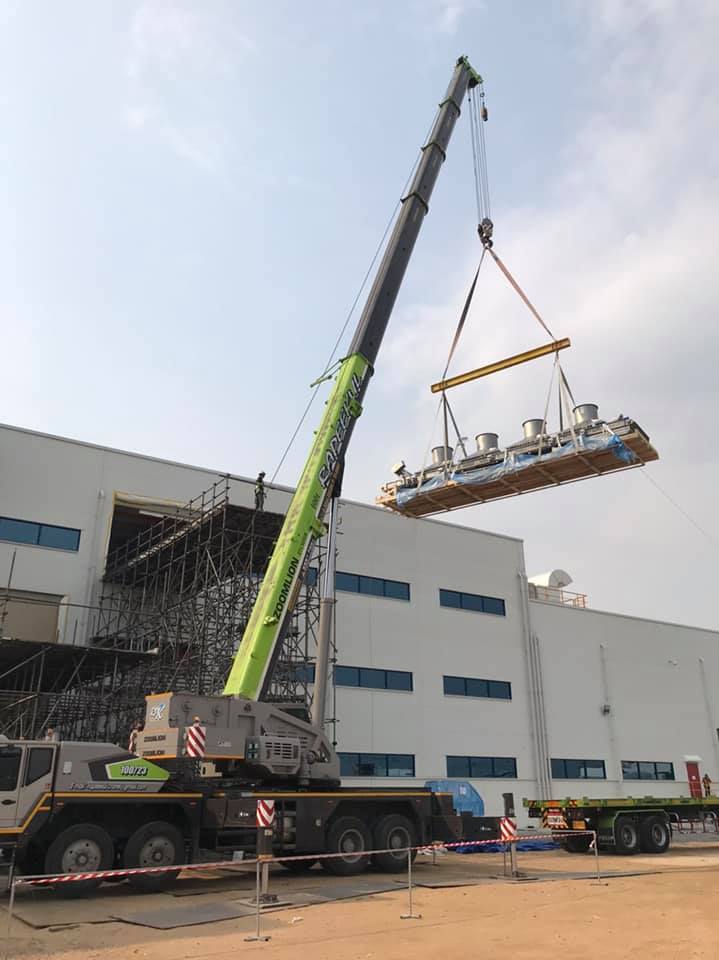a complex of structures for transporting petroleum and petroleum products from the place of extraction or production topoints of use or transfer to rail or water transportation. A pipeline consists of underground and underwater pipes, fittings,head and booster pumping stations, petroleum tanks, and line and auxiliary structures.
Main or trunk pipelines are used to transport oil and petroleum products over considerable distances, often 2,000 km ormore. The diameter of trunk lines is 200–1,220 mm, and the pressure is usually 5–6 meganewtons per sq cm (50–60kilograms-force per sq cm). Gathering lines are used to transport petroleum from oil fields to the heads of the trunk lines andpetroleum products from refineries to the heads of products pipelines; they may be up to several dozen kilometers long. Oil-field gathering lines and refinery and bulk plant pipelines are designed for internal transfers.
The main parameters of a trunk pipeline are length, capacity, diameter, pressure, and number of pumping stations. The firsttwo parameters are specified, and the rest are determined by calculation. Carbon and low-alloy steel pipes, mainly weldedwith longitudinal and spiral seams, are used in oil pipeline construction. The viscosity and density of the petroleum andpetroleum products to be pumped are very important in the design of trunk lines. The pipes are protected from soil corrosionand stray currents by means of anticorrosion insulation and electrochemical protection methods (cathode protection,electrically polarized protectors, electrodrainage). Line-cutting gate valves are installed along the entire length of thepipeline. The distance between gate valves depends on the nature of the terrain but usually does not exceed 20 km. Whenpumping high-viscosity and highly congealed oil, the oil is heated at the pumping stations and intermediate preheatingpoints. The construction cost of trunk pipelines is repaid over relatively short periods (usually two to three years).
The first petroleum pipeline, which was 6 km long, was built in the USA in 1865. Construction of longer pipelines in the USAbegan in 1875. The first petroleum pipeline in Russia was laid in 1878 in Baku, from the oil fields to the refinery. The 835-km, 200-mm Baku-Batumi products trunk line (with 16 pumping stations), which was once the longest line in the world and isstill in use today, was designed by V. G. Shukhov and built in the period from 1897 to 1907.
The development of pipeline transportation in the USSR is associated with the completion of the oil fields in the BashkirASSR, the Tatar ASSR, and Kuibyshev Oblast of the RSFSR. In 1941, 4, 100 km of trunk pipelines for petroleum andpetroleum products, with a total annual capacity of 7.9 million tons, were in operation. The maximum diameter was 300 mm.The total length of the trunk lines increased to 11,500 km in 1956 and 29,000 km in 1966.
The present trunk-line network was developed in three main directions: Ural-Siberian (Al’met’evsk-Ufa-Omsk-Novosibirsk-Irkutsk), 8,527 km long (petroleum and petroleum-products pipelines); northwestern (Al’met’evsk-Gorky-Yaroslavl-Kirishi,with a branch to Riazan’ and Moscow), more than 1,700 km long; and southwestern (from Al’met’evsk to Kuibyshev andfarther via the Druzhba [Friendship] Pipeline, with a branch to Polotsk and Ventspils), more than 3,500 km long. With thediscovery of new oil deposits in the southern Mangyshlak Peninsula and in Tiumen’ Oblast, unique pipelines were built: theUzen’-Gur’ev-Kuibyshev line, 1,500 km long, with a diameter of 1,020 mm, for pumping the high-viscosity and highlycongealing Mangyshlak oil, with en-route heating (a “hot” pipeline); the Ust’-Balyk-Omsk line, 1,000 km long, with a diameterof 1,020 mm; the Shaim-Tiumen’ and Aleksandrovskoe-Anzhero-Su-dzhensk lines, 1,220 mm in diameter, with a total lengthof 840 km; the. Ust’-Balyk-Kurgan-Ufa-Al’met’evsk line, 1,220 mm in diameter and a total length of 1,844 km, and thesecond Friendship Pipeline. The total length of petroleum pipelines in the USSR in 1973 was 42,900 km. A characteristicfeature of the development of petroleum pipeline transportation in the USSR is the increase in the proportion of large-diameter pipelines









































